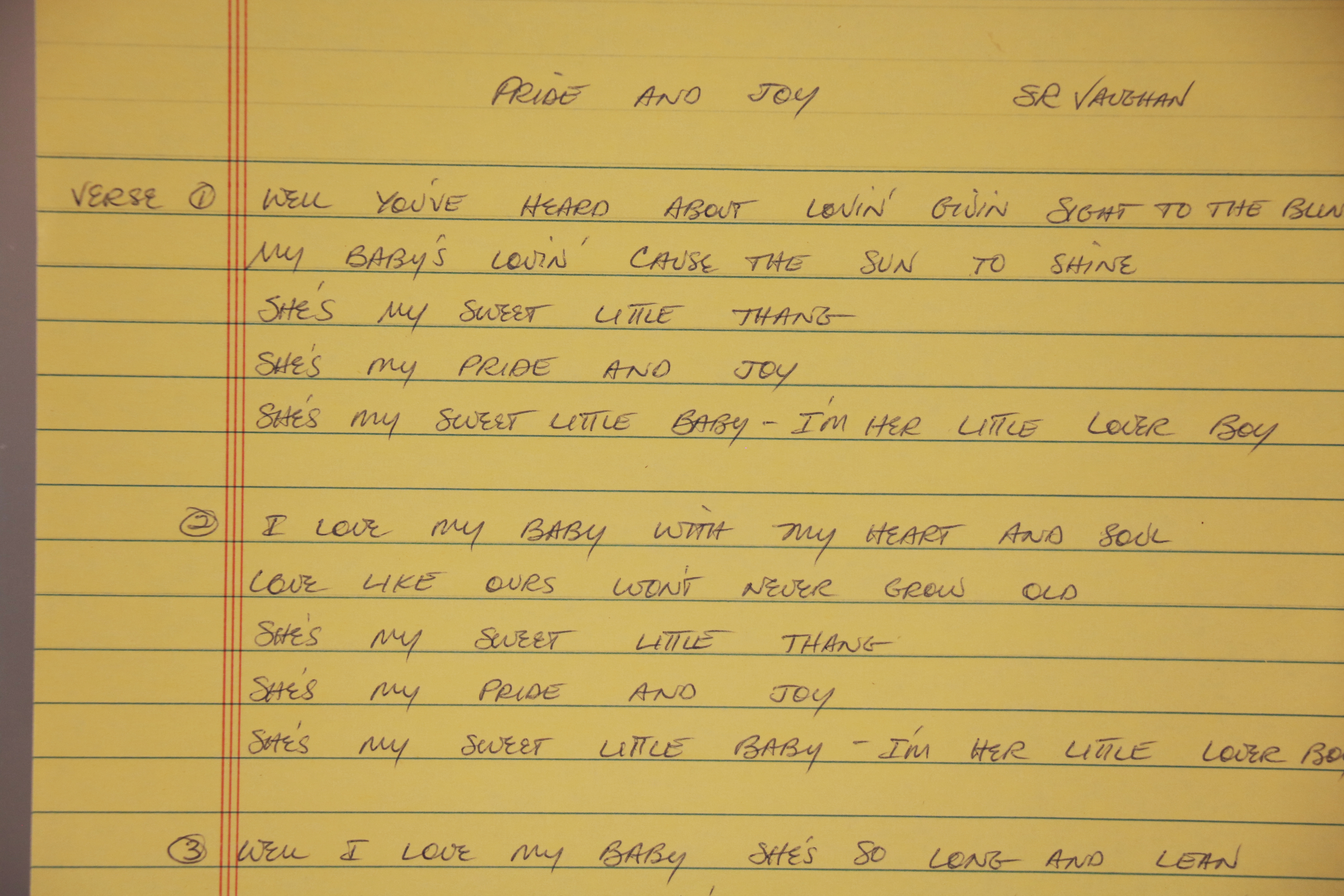Stevie Ray Vaughan comes to The Wittliff
The recent acquisition of a substantive Steve Ray Vaughan archive is the latest gem preserved at The Wittliff Collections at Texas State University, home of more than 500 historic literary, photographic, film and music collections.
The new SRV collection offers intimate insights into the life and career of the legendary guitarist in three distinct arenas: songwriting, recovery and the complicated relationship with his brother, musician Jimmie Vaughan.
He was much more than simply a Texas blues guitar god.
A few of the items will go on display for the first time in the upcoming exhibition “The Songwriters: Sung and Unsung Heroes of the Collection” which opens this spring in the Texas Music Gallery.
Music fans will marvel at such display artifacts as the iconic black hat with concho hat band worn at Carnegie Hall, the tall suede boots with buckskin fringe and favorite moccasins, his pipe and flask, his guitar strap. It’s the kind of eye candy museum-goers love.
Historians, researchers, students and the public will soon be able to access the bulk of the SRV materials, which include rare photographs, handwritten lyrics, production notes, studio lyric boards, tour books, drawings, personal journal notes and tapes.
The materials bring us closer to the artist in nuanced ways. Revelations are sometimes found in scrawled notes on hotel envelopes or the back of tour books.
For example, on the back of a well-worn 1987 tour book with his band Double Trouble are the following lyrics.
I love my baby
She’s good to me
When she tells me
She loves me too (rue)
The way she kiss me
So tenderly
Makes me happy
As a man can be
But it’s not only songwriting methods or artistry revealed. Such tour books document the promoters the band was using, the names of hotels where they stayed and the size of the venues Double Trouble was playing at the time. (In this instance, SRV was playing mostly venues with a capacity of 1700-2600 seats).
The preserved materials include a hand-drawn backstage stage pass. The figure is familiar – SRV wearing his flat black hat, reaching over to tune his guitar, a sash round his waist. One can almost feel his brimming pride in images showing SRV posing in front of Carnegie Hall, or feel a little envious when looking at the band’s set list for that show.
The new collection puts the researcher inside SRV’s head when it comes to understanding how important his recovery and spirituality were near the end of his life. And how kicking alcohol and drug addiction wasn’t easy.
A humble 6-inch by 9-inch Mead note pad documents such moments.
“One of the great values of meditation is that it clears the mind. And as the mind becomes clearer, it becomes more capable and willing to acknowledge the truth.”
In another note book, SRV writes: “Today I start anew . . . burdens that I carry around in shame and guilt.”
It was a burden, he detailed, that began at a very young age.
A reader can’t help but be moved. The research materials are intimate. Other writings are brutally frank. Even highlighted areas in his personal book collection – whether about his hero Jimi Hendrix or in “Living Sober” – are tantalizing clues about what mattered to him.
There are glimpses of Vaughan’s playful side and sense of humor. One finds it in a snippet of a handwritten note on a Hotel Orleans envelope. SRV’s brother and childhood were on his mind.
“Jimmie faking a heart attack or going crazy when we were kids. Saying I had driven him crazy.”
On a sheet of stationary from The Peabody hotel in Memphis, SRV’s mood is markedly different: “I would rather have a big change in my life. Than to take the small change that the world that I have been involved in offers me.”
A portrait of the man emerges, as well as further evidence of what SRV meant to the world. Author Sam Shepard (whose archives are also housed at The Wittliff) perhaps said it best in his inscription in the book “Motel Chronicles” for the guitarist. It’s dated June 1985.
“Stevie Ray – to the heart of Texas.”







